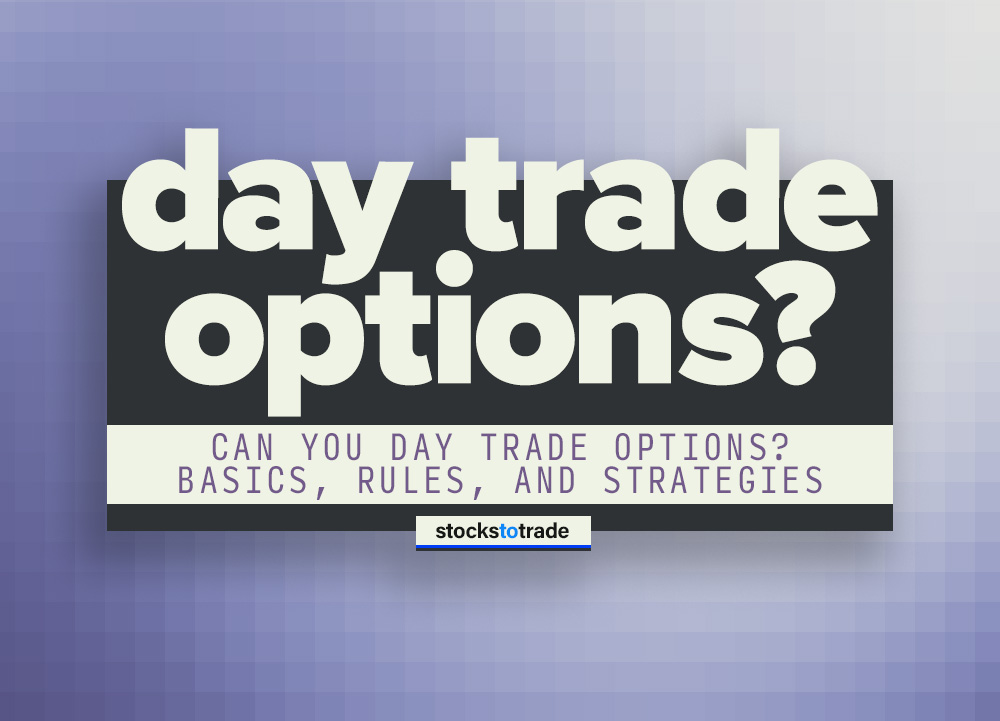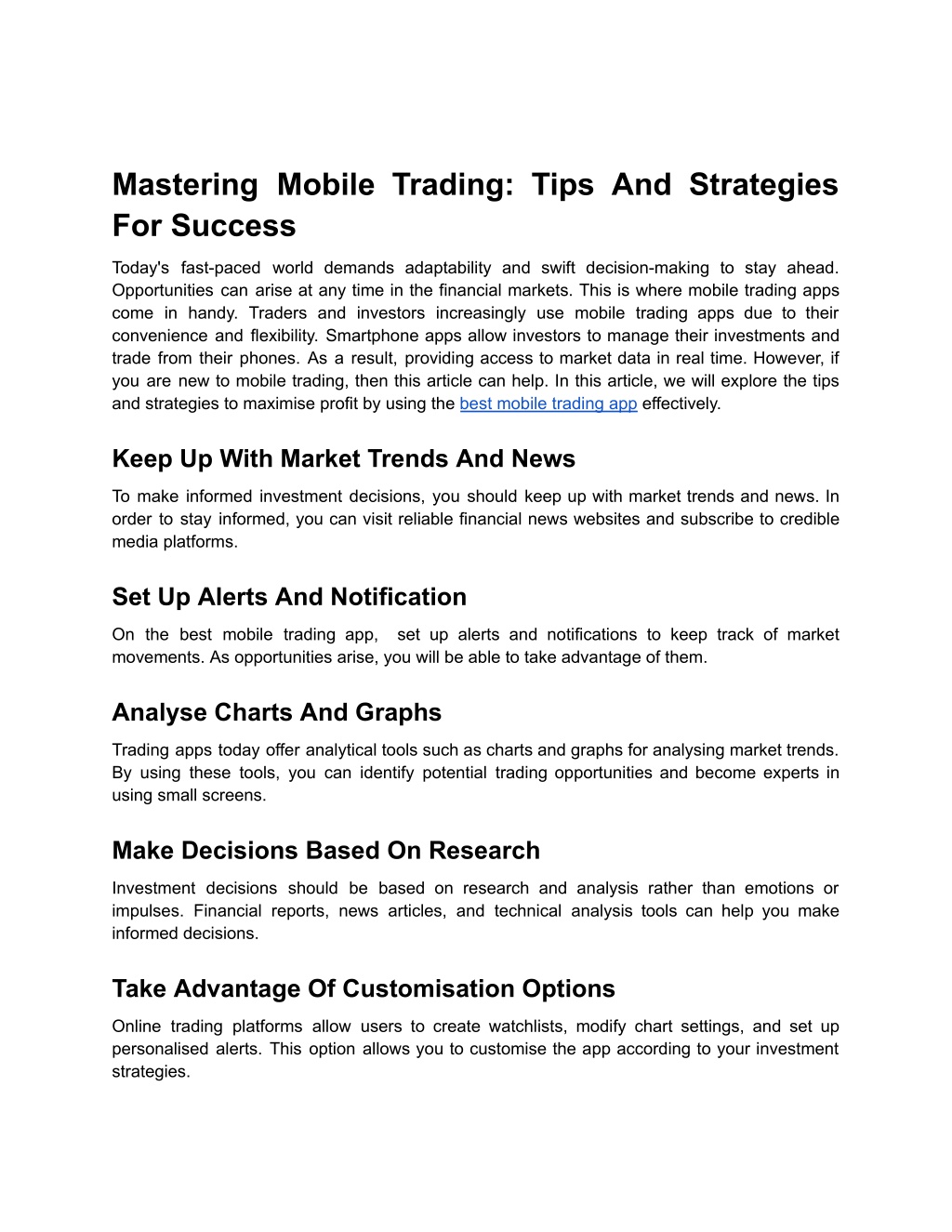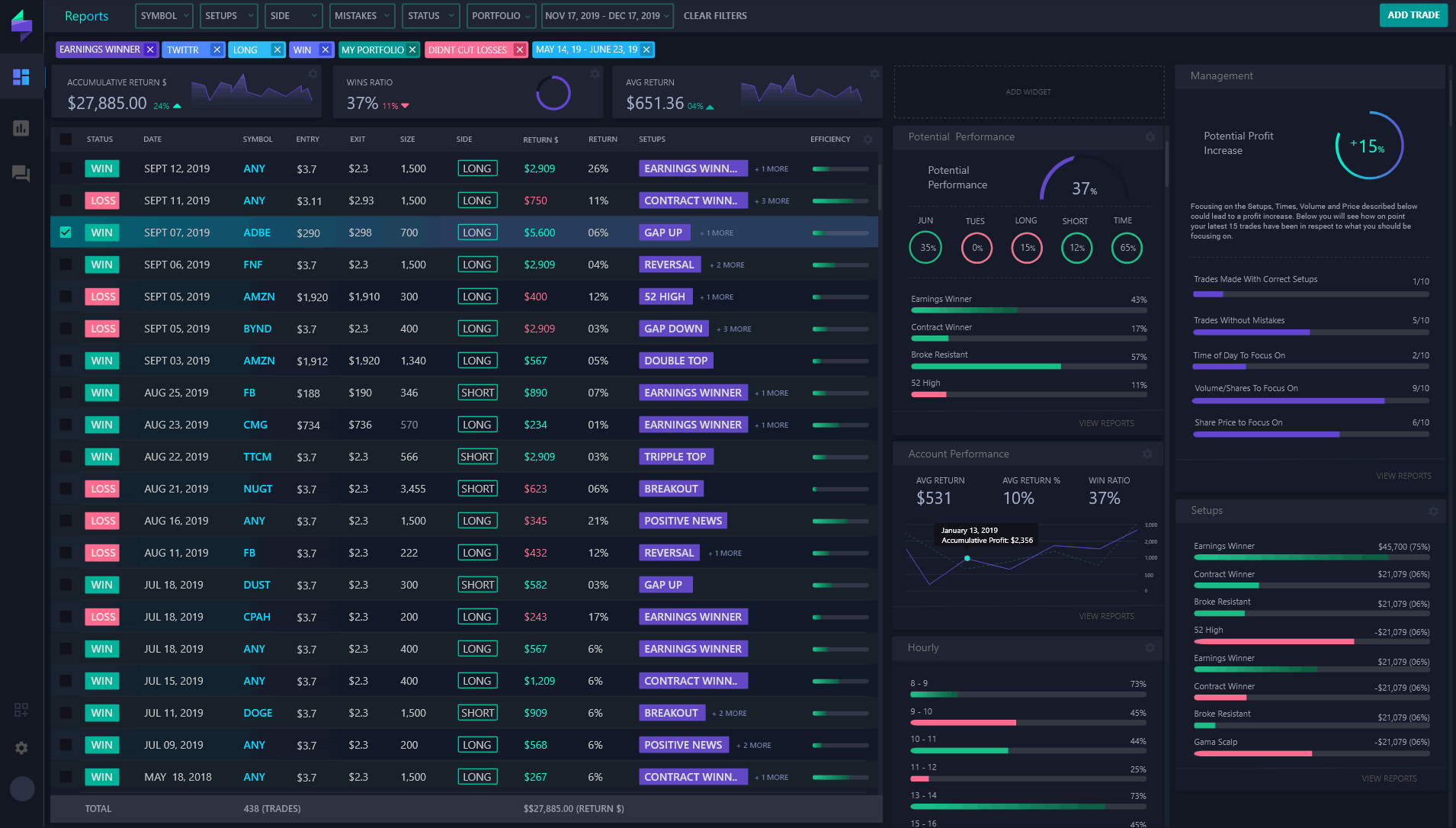Did you know that the average person spends about 6 months of their life waiting for red lights to turn green? While you ponder that, let's dive into the essential tools that can accelerate your day trading options success. This article covers everything from the best trading platforms and software for analysis to the importance of reliable internet connections and effective risk management tools. Discover how brokerage fees impact your profits, the must-have indicators for traders, and how to leverage options scanners and mobile apps effectively. Plus, we’ll provide insights into performance tracking and setting alerts for trading opportunities. Equip yourself with the right tools and strategies to thrive in the fast-paced world of options day trading with insights from DayTradingBusiness.
What are the essential tools for day trading options?
The essential tools for day trading options include:
1. Trading Platform: Choose a reliable platform like Thinkorswim or Interactive Brokers for executing trades quickly.
2. Charting Software: Use tools like TradingView or StockCharts for technical analysis and real-time data.
3. Market Scanners: Tools like Finviz or Trade-Ideas help identify potential trading opportunities based on specific criteria.
4. News Feed: Access services like Benzinga Pro or Bloomberg for real-time news that impacts market movements.
5. Risk Management Tools: Implement tools for setting stop-loss orders and position sizing to manage risk effectively.
6. Options Pricing Calculator: Use calculators like the Black-Scholes model to evaluate option pricing and Greeks.
7. Economic Calendar: Keep track of economic events and earnings reports that can influence volatility and trading strategies.
Having these tools at your disposal can enhance your day trading options strategy.
How do trading platforms impact options day trading?
Trading platforms significantly impact options day trading by providing tools for real-time analysis, order execution speed, and customizable interfaces. A robust platform offers advanced charting capabilities, enabling traders to make quick, informed decisions. Features like live data feeds, risk management tools, and alerts help traders stay on top of market movements. Additionally, user-friendly navigation and mobile access ensure that traders can execute strategies efficiently, even on the go. Overall, the right trading platform enhances a trader's ability to capitalize on short-term opportunities in the options market.
What software is best for analyzing options trades?
The best software for analyzing options trades includes Thinkorswim by TD Ameritrade, which offers robust charting and analysis tools. Another great option is Option Samurai, known for its user-friendly interface and powerful screening capabilities. For advanced analytics, check out Tradestation, which provides deep insights and customizable strategies. Lastly, Interactive Brokers offers comprehensive tools for professional-level analysis. Choose based on your specific trading needs and level of expertise.
Which charting tools are essential for options day trading?
Essential charting tools for options day trading include:
1. Thinkorswim: Offers advanced charting features and technical analysis tools.
2. TradingView: Provides customizable charts and a strong community for sharing ideas.
3. TC2000: Known for real-time data and extensive technical indicators.
4. E*TRADE Pro: Combines powerful charting with robust options analytics.
5. NinjaTrader: Great for advanced charting and strategy testing.
These tools help visualize price movements and analyze trends crucial for making quick trading decisions.
How do brokerage fees affect day trading options?

Brokerage fees can significantly impact day trading options by reducing overall profitability. High commissions or spreads eat into gains, making it harder to break even. For frequent trades, even small fees accumulate quickly, so choosing a broker with low or zero commissions is crucial. Additionally, understanding fee structures helps traders plan strategies more effectively, as hidden costs can erode profit margins. Overall, managing brokerage fees is essential for successful day trading in options.
What risk management tools should I use for options trading?
For options trading, use these key risk management tools:
1. Stop-Loss Orders: Set predefined exit points to limit losses on trades.
2. Position Sizing: Determine the amount of capital to risk on each trade, usually a small percentage of your total account.
3. Options Analytics Software: Utilize tools like Thinkorswim or Optionistics for real-time data and analysis.
4. Volatility Indicators: Monitor implied volatility to gauge potential price movements and adjust strategies accordingly.
5. Risk/Reward Ratios: Calculate potential gains versus losses to ensure favorable trades.
6. Diversification: Spread investments across different options to mitigate risk.
7. Profit Targets: Establish clear profit-taking levels to secure gains.
Incorporate these tools to effectively manage risk in your options trading strategy.
How can I utilize options scanners effectively?
To utilize options scanners effectively, start by setting clear criteria for your trades, such as volume, open interest, and specific price movements. Use scanners to filter stocks based on these criteria, which helps identify potential trades quickly. Focus on unusual options activity, as it can signal strong market interest or upcoming volatility.
Customize alerts for price changes or volume spikes to stay updated in real-time. Combine scanner insights with technical analysis to confirm entry and exit points. Regularly review your scanner settings to adapt to changing market conditions and improve your strategy.
What are the best mobile apps for day trading options?
The best mobile apps for day trading options include:
1. TD Ameritrade's thinkorswim – Offers advanced charting and analytics.
2. E*TRADE – Features a user-friendly interface and powerful trading tools.
3. Robinhood – Great for commission-free trading with easy navigation.
4. Webull – Provides real-time data and advanced technical analysis tools.
5. Fidelity – Offers extensive research and a robust mobile platform.
Each of these apps caters to different trading styles and preferences, making them top choices for day traders.
How important is a reliable internet connection for options trading?
A reliable internet connection is crucial for options trading. It ensures real-time access to market data, enabling you to make timely trades. Delays or outages can lead to missed opportunities or losses. For day trading, where every second counts, a stable and fast connection can significantly impact your success.
What educational resources are available for day trading options?
For day trading options, consider these educational resources:
1. Online Courses: Platforms like Udemy and Coursera offer courses specifically on options trading strategies.
2. Books: Titles such as "Options as a Strategic Investment" by Lawrence G. McMillan and "The Options Playbook" by Brian Overby provide in-depth knowledge.
3. Webinars: Many brokers host free webinars focusing on options trading techniques and market analysis.
4. YouTube Channels: Channels like Tastytrade and The Trading Channel offer valuable insights and practical tips.
5. Trading Simulators: Platforms like Thinkorswim or Investopedia’s simulator allow you to practice trading options without real money.
6. Forums and Communities: Websites like Reddit’s r/options and StockTwits provide a space to discuss strategies and share experiences.
7. Brokerage Resources: Many brokerages offer educational materials, articles, and tutorials specifically for options trading.
Utilize these resources to enhance your skills in day trading options effectively.
How do I set up alerts for options trading opportunities?

To set up alerts for options trading opportunities, use a trading platform with alert features. Most platforms allow you to create alerts based on price movements, volume changes, or specific technical indicators.
1. Choose a Trading Platform: Select a platform like Thinkorswim, TradeStation, or Robinhood that supports options trading alerts.
2. Create Alerts: Navigate to the alerts section. Set specific criteria such as price thresholds for options contracts or unusual volume spikes.
3. Select Notification Method: Decide how you want to be notified—via email, SMS, or app notifications.
4. Monitor Market News: Use tools like Yahoo Finance or Bloomberg for news alerts that may impact options trading.
5. Review and Adjust: Regularly review your alerts to ensure they align with your trading strategy and market conditions.
Implementing these steps will keep you informed about key options trading opportunities.
Learn about How to Set Up Alerts for Day Trading Stocks
## What Essential Tools Do You Need for Successful Options Day Trading?
To day trade options effectively, you need essential tools such as a reliable trading platform, market analysis software, real-time data feeds, and a brokerage account with low commissions. Additionally, using charting tools and options calculators can help in making informed decisions quickly.
Learn more about: Understanding Options in Day Trading
Learn about What Tools Do You Need for Day Trading?
What role does market news play in day trading options?
Market news is crucial for day trading options as it influences price movements and volatility. Traders use news to anticipate market reactions, making informed decisions on which options to buy or sell. Economic reports, earnings announcements, and geopolitical events can create short-term opportunities. Staying updated allows traders to capitalize on rapid changes, manage risks, and execute strategies effectively.
Learn about The Role of Market Sentiment in Day Trading Stocks
How can I track my performance in options trading?

To track your performance in options trading, use these essential tools:
1. Trading Journal: Record every trade, including entry and exit points, reasoning, and outcomes. This helps identify patterns and mistakes.
2. Brokerage Platform Analytics: Most platforms provide performance metrics like win rate, average gain/loss, and overall portfolio performance. Review these regularly.
3. Spreadsheet Software: Create a spreadsheet to log trades and calculate key metrics like return on investment (ROI) and profit/loss ratios.
4. Performance Tracking Apps: Consider apps specifically designed for traders, like TradeBench or Tradervue, to analyze your trading history and performance.
5. Daily Reviews: Set aside time weekly to review your trades, assess what worked, and adjust your strategies accordingly.
Using these tools consistently will help you monitor and improve your options trading performance.
What are the must-have indicators for options traders?
Must-have indicators for options traders include:
1. Implied Volatility (IV) – Essential for assessing option pricing relative to expected future volatility.
2. Delta – Measures the sensitivity of an option’s price to changes in the underlying asset's price.
3. Gamma – Indicates the rate of change of delta, helping traders anticipate price movements.
4. Theta – Represents time decay, crucial for understanding how options lose value as expiration approaches.
5. Vega – Measures sensitivity to changes in volatility, important for managing risk in options strategies.
6. Open Interest – Reflects the total number of outstanding options contracts, providing insight into market activity and liquidity.
7. Volume – Indicates the number of contracts traded, helping assess the strength of price movements.
Using these indicators can enhance decision-making and risk management in options trading.
How can I automate my options trading strategies?
To automate your options trading strategies, use a trading platform that supports algorithmic trading, like Thinkorswim or TradingView. Implement trading bots or algorithms that execute trades based on predefined criteria. Consider using programming languages like Python for custom scripts that connect to APIs of brokerage firms. Backtest your strategies using historical data to ensure effectiveness before going live. Set up alerts and risk management parameters to safeguard against market volatility.
What features should I look for in an options trading platform?
Look for a user-friendly interface, fast execution speeds, and low fees. Ensure it offers advanced charting tools, customizable watchlists, and real-time market data. Check for educational resources like tutorials and webinars. Risk management features, such as stop-loss orders and alerts, are crucial. Lastly, ensure it has a robust mobile app for trading on the go.
Conclusion about Essential Tools for Day Trading Options
In conclusion, the right tools and resources are vital for successful day trading options. From selecting a robust trading platform and utilizing effective software for analysis to managing brokerage fees and market news, each element plays a critical role in enhancing your trading experience. Risk management tools, alerts for trading opportunities, and performance tracking are essential for optimizing your strategies. To stay informed and improve your skills, leverage educational resources and mobile apps tailored for options trading. By employing these tools, you can navigate the complexities of the options market with confidence, ensuring a more efficient and informed trading journey. For further insights and support, DayTradingBusiness is here to help you thrive in the world of options trading.
Learn about Frequently Asked Questions About Day Trading Options
Sources:
- Interest on Reserves: A Preliminary Analysis of Basic Options - April ...
- Deep Learning for Options Trading: An End-To-End Approach
- A Financial System Tested by Higher Inflation and Interest Rates
- Do options trading activities affect underlying firms' asymmetric cost ...
- Artificial intelligence techniques in financial trading: A systematic ...
- A review of modelling tools for energy and electricity systems with ...